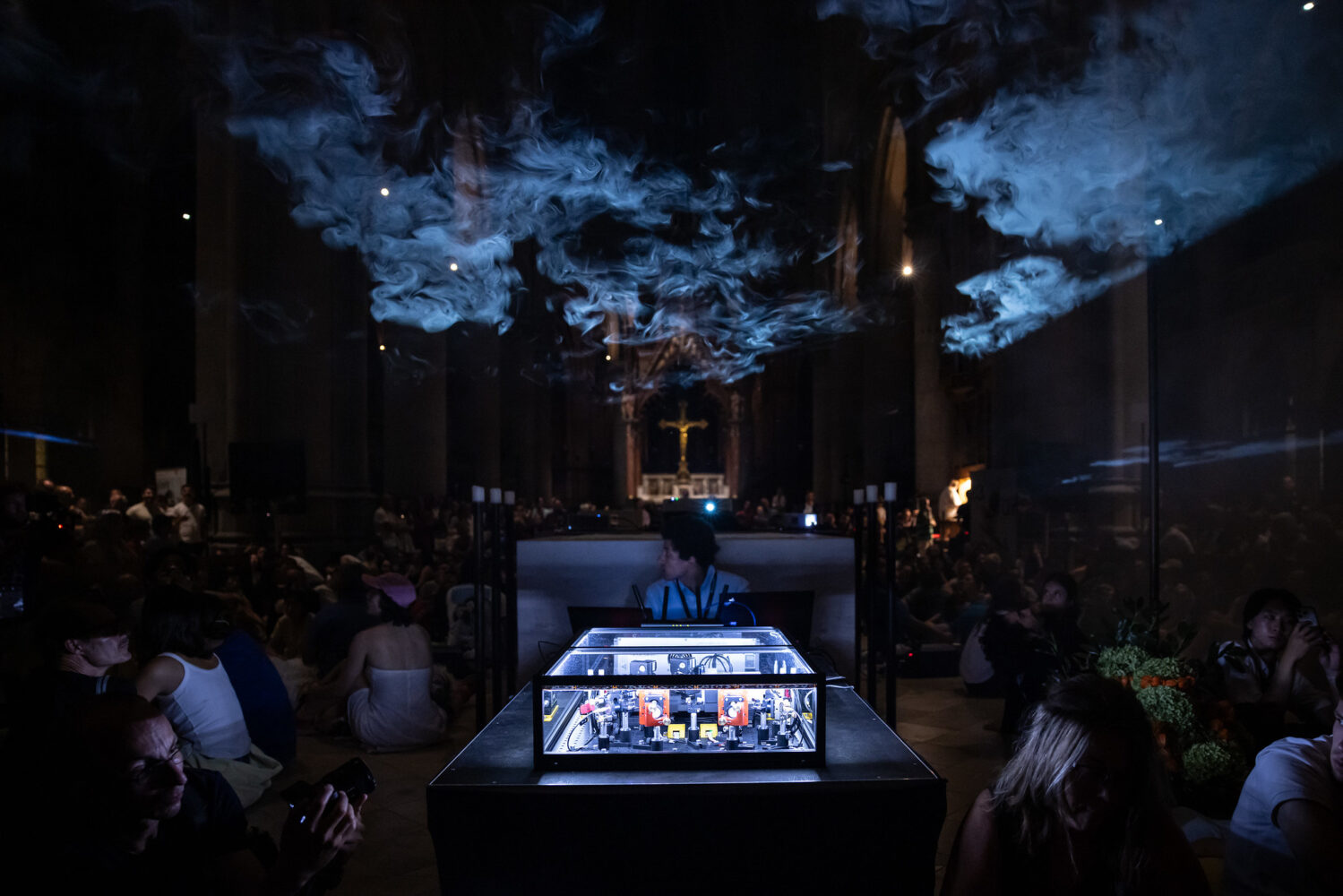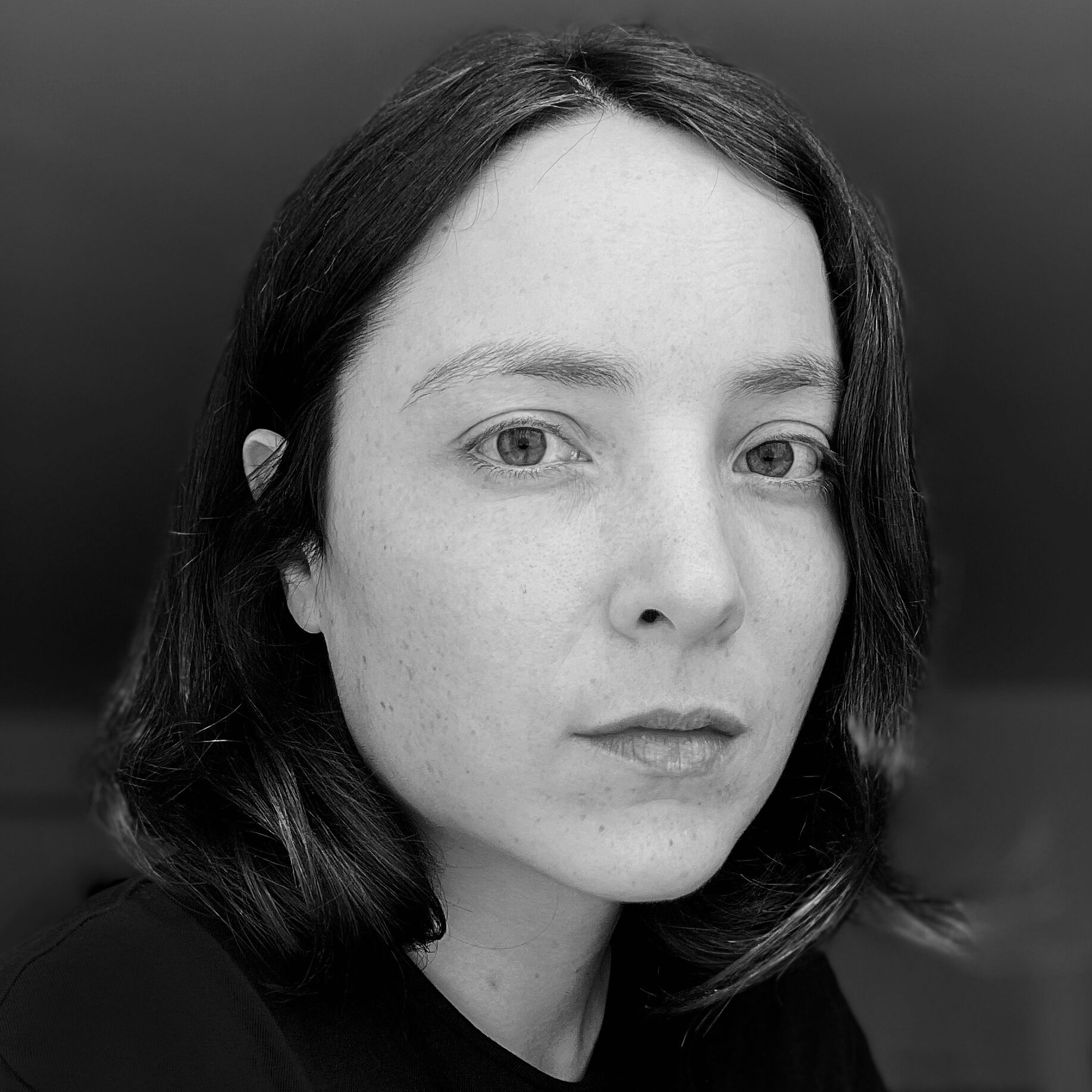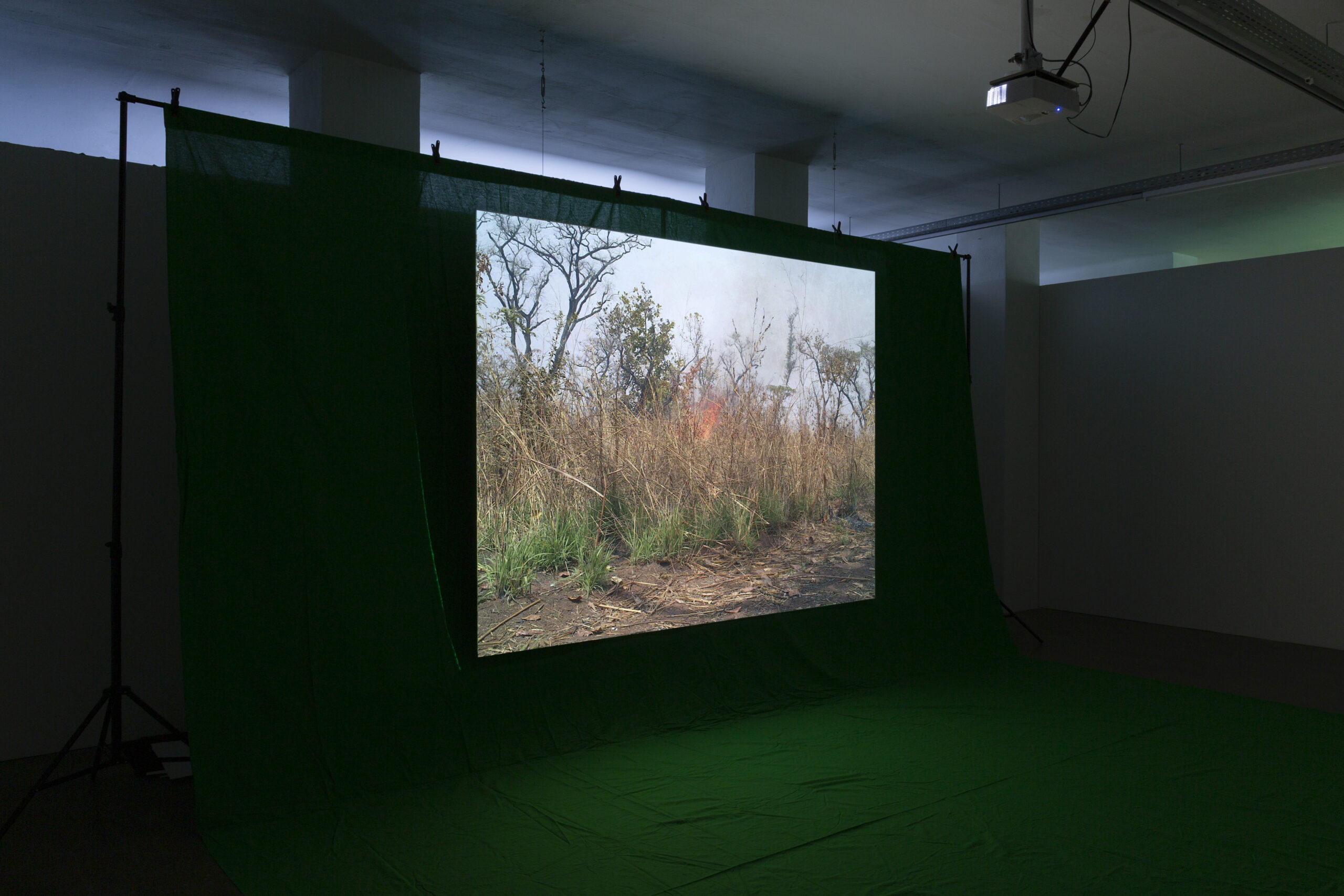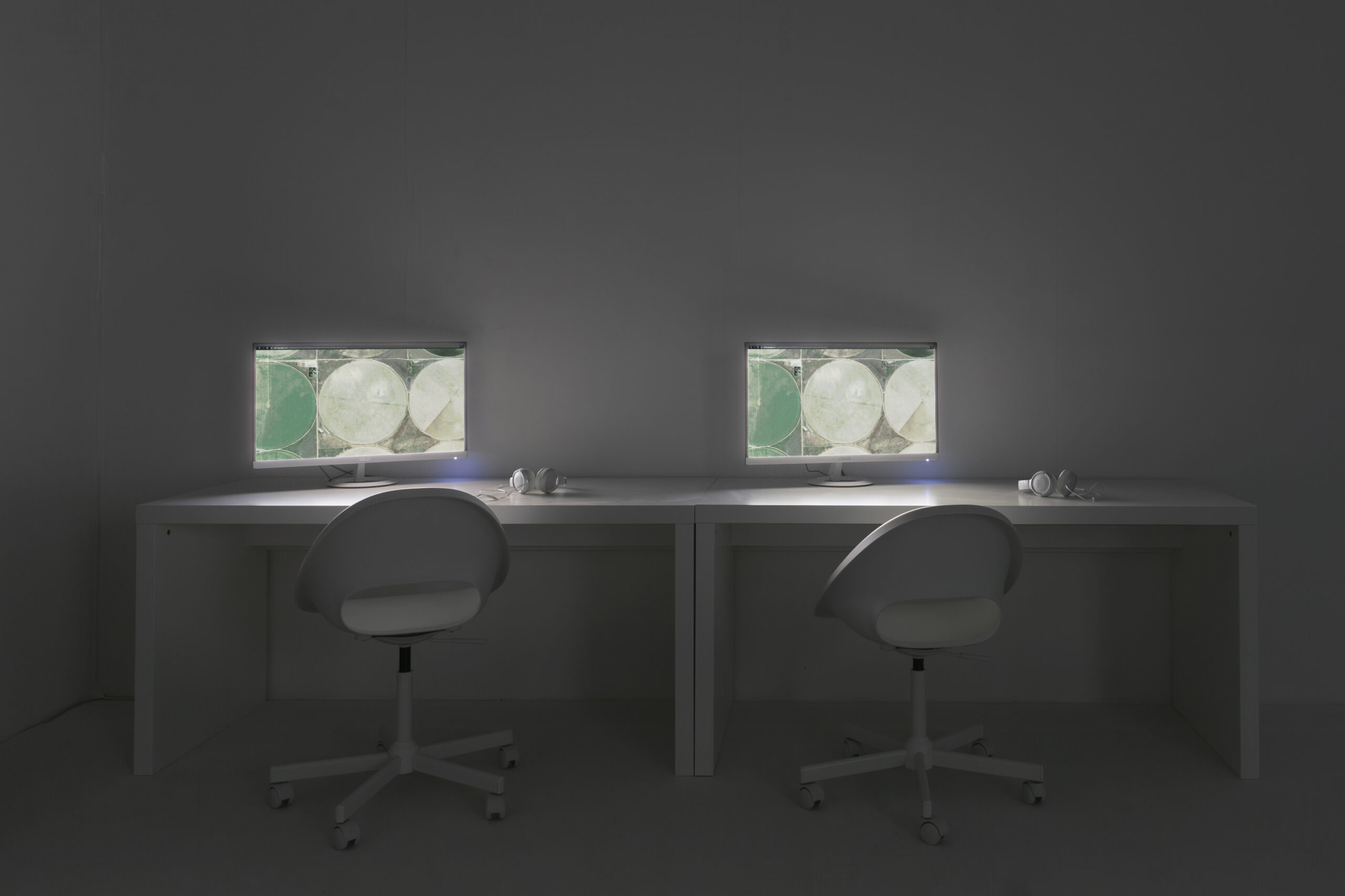Borders, technology, and power—Enar de Dios Rodríguez challenges us to rethink the spaces we live in through her award-winning, thought-provoking audiovisual essay, Ecotone.
Enar de Dios Rodríguez has been awarded the prestigious Marianne.von.Willemer Prize for Digital Media 2024, a recognition that celebrates female artists pushing the boundaries of digital art. With a prize of 5,000 euros, this award, given by the city of Linz, honors innovative works that creatively utilize digital media as both a tool and a medium for expression. Rodríguez, known for her anticapitalist and feminist lens, continually reinterprets technology as a way to generate new perspectives through her multidisciplinary approach.
Her award-winning piece, Ecotone, exemplifies this vision. It’s more than an exhibition—Ecotone is a six-part audiovisual essay spread across an exhibition space, where words and images appear scattered across screens, inviting viewers into a deeper reflection. We caught up with Rodríguez to discuss her thoughts on winning the Willemer Prize, her creative process, and how working in Linz compares to her experiences in Spain and Vienna.
First, I wanted to ask you about the Willemer Prize. What does it mean to you? Is it just one of many awards, or does it have special significance because it’s a local prize?
Enar de Dios Rodríguez: I do show my work internationally, and sometimes in Austria, but not as often. However, I live in Austria, and receiving such recognition, especially one with local significance, is really important to me within the Austrian context. I’m very grateful for it. As with any visual artist, it’s not the easiest economic path to follow, so receiving a prize like this is also important from a practical standpoint—it helps me continue to live off what I do every day.
For someone unfamiliar with your work, could you explain a little about what’s important to you and the topics you deal with?
Enar de Dios Rodríguez: My work is research-based and very interdisciplinary, using a variety of mediums. After a long process of researching a specific topic, all the research is materialized into a series of objects or things that are then presented in an exhibition space. My projects typically revolve around a central piece, usually a video. I often work with the format of the audiovisual essay—like a written essay but accompanied by images. The topics I deal with vary, but they all have a common thread: the production of space or acts of territorialization. Even though space is always being produced, I am particularly interested in what I call “spaces-in-the-making”: spaces that are contested, still poorly legislated, mostly unowned, and although they have resisted cartographic methods, they are already in the process of being occupied and exploited. For example, a large project I worked on titled “Liquid ground” dealt with the current cartography of the ocean floors, and how this underwater space (until recently with the status of “common heritage of mankind”) is being mapped, partly divided between nations, and envisioned as a future mine. Another of my works, Ecotone, which won the prize, dealt with borders—specifically, the borders between spaces. This is another example of a contested space, one that can move and shift.
Currently, I’m researching cosmic, aerial, and underground spaces. These spaces differ from the horizontal surface of the Earth, or the bottoms of the oceans, where borders are defined by violently placing a flag and declaring, “This is my country”. In cosmic space, for instance, orbits are occupied by satellites. There’s very little international legislation governing these orbits, and anyone with the means to launch a satellite can do so with permission from their own country. This is somewhat absurd, considering that these orbits could be occupied indefinitely and the immense influence these technologies hold over contemporary life on Earth’s surface (from GPS and global communication, to military surveillance and environmental monitoring). Indigenous communities have already coined the term astro-colonialism: the extension of colonial ideologies and practices into outer space.
I’m interested in examining these spaces as they are being formed, as well as discussing the issues surrounding them. I look at how environmental issues intersect with economic factors, and how these are tied to historical events, particularly in relation to capitalism. I aim to bring a feminist, decolonial perspective to these topics, envisioning an anticapitalist alternative—a possibility for something different.
I understand that Ecotone also expresses ideas about control and power in a capitalist context. How are these themes conveyed in the work? How can a visitor experience and feel this in an exhibition?
Enar de Dios Rodríguez: Ecotone is divided into different chapters, with an introduction and an epilogue. The chapters are organized by scale, exploring borders and how space is controlled and divided. I start with large-scale spaces and move to smaller ones. The first chapter focuses on a natural reserve area in Central African Republic called Chinko, an ecotone which covers thousands of square kilometers. It’s a protected area, but it requires separation and conservation, which itself is a form of control. The next chapter focused on spaces of smaller scale: agricultural fields, spaces artificially created by humans for their continuous exploitation, which also need to be separated and controlled in a very different way (and this also has significant consequences).
Then I move to an even smaller scale: private space, like the space we each have in our homes, and how it’s also being surveilled and influenced. Finally, the last chapter goes to an even smaller space, looking inside the body, a molecular space which is being similarly studied and controlled by fragmentation. In any of the cases, spaces are being controlled and separated in different ways, often for the purpose of their exploitation.
Each chapter is represented visually in a different manner, and these visuals reflect upon systems of control. For instance, in the chapter about Chinko, I use footage from trap cameras. These cameras, often used by biologists or hunters, capture images whenever they detect movement, whether it’s an animal or even just a tree swaying in the wind. I was given a huge database of millions of images from a friend that worked in Chinko, and I became fascinated with how this technology is used to control and monitor nature.

In the next chapter, I use satellite images, a form of visual representation that is connected to spatial surveillance and exploitation. Satellite imagery is used in the agriculture industry to obtain a wide range of data related to crops, land conditions, and weather, monitoring and reshaping how the land is used. For the private space chapter, I’m using an interplay of recorded video and 3D imagery that represents reflections on a smartphone camera lens. This highlights how smartphones are constantly capturing our daily life. We sign agreements without reading them, allowing these devices to record, archive, and even exploit our most private images and information, which then will be used to influence our behaviour.
In the molecular space chapter, I use 3D animations of historical anatomical models, such as an eye model from 1870 that can be opened to reveal its parts. These models were used to represent the body’s internal structures, and I found it fascinating how they were originally created in paper mache and now they have been 3D scanned for education purposes. I was drawn to 3D scan technologies because of how they generate virtual realities from a physical one, and how these similarly create new forms of ownership, circulation and understanding.
You talk about using technology in your work, while also critiquing it. Ars Electronica’s main focus is the relationship between art, technology, and society. What is technology’s role in your work, and how do you engage with it?
Enar de Dios Rodríguez: I’m particularly interested in the technology of images. It’s not about the technology itself, but about how these devices create specific visions. I’m less interested in manipulating the devices and more focused on how we can reread and reframe the images they produce. My approach might be considered ecological—it’s about questioning the images these technologies create rather than using the technology to create something new. I believe it’s important today, when so many images and pieces of information are produced daily, to read them in a way that resists the dominant capitalist narrative. I see potential in reading these images differently, so that every time we encounter them, we can reinterpret them with an anticapitalist or feminist perspective.
That’s really interesting. I also wanted to ask you a little bit about the BruQner project that took place in the context of the Ars Electronica Festival 2024. It brought together artists from different disciplines, which I found fascinating. How was it for you to work in such an interdisciplinary team?
Enar de Dios Rodríguez: In addition to my individual practice, I collaborate with a wide range of people. I’m part of the Golden Pixel Cooperative, a collective focused on moving image work, and I’ve worked with various artists and thinkers. One of my long-term collaborators is Philipp Haslinger, a quantum physicist from the TU Wien. We previously collaborated on another project called SEEC Photography, where we worked with another physicist, Thomas Juffmann, to visually capture the movement of light through a wide range of scenes and objects. Last year Philipp and the musician Clemens Wenger started discussing how quantum music might sound. This ultimately took shape in the BruQner project, where they invited me to collaborate by creating the visuals for it.
This was my first time creating visuals for a live performance, which was a new experience for me. Usually, I have complete control over my work, as I do with Ecotone, where every image and text is meticulously managed. But for BruQner, the visuals were automated based on the live measurements from a Bell experiment, which meant I had no control over the final outcome. The experiment itself determined the music and visuals, and while I initially found it unsettling to lose control, I think it worked well in the end. The project was all about letting the physics speak for itself and allowing the experiment to create the art in real time.

Lastly, regarding the Willemer Prize and Linz’s identity as a media art capital—how does working in Linz differ from Vienna or Spain?
Enar de Dios Rodríguez: Linz feels more collaborative and intimate, perhaps due to its smaller size. People really support one another, and even at the university, there’s a strong sense of openness and collaboration. In Vienna, it can be more individualistic, but in Linz, I noticed that people tend to collaborate more often. I think it’s partly due to the size of the community and perhaps the influence of art and technology, which encourages interdisciplinary interactions. During my residency at Salzamt, I experienced this firsthand—everyone attended each other’s openings and supported one another’s work. It was a very welcoming and supportive environment.
The award ceremony for the Marianne.von.Willemer – Prize for Digital Media 2024 will take place on October 17th in the old town hall. The next call for submissions for the prize will take place in spring 2026.

Enar de Dios Rodríguez
Enar de Dios Rodríguez is a research-based visual artist. Her multidisciplinary work has been exhibited internationally at a wide range of institutions including Kunsthalle (Vienna), MAXXI (Rome), Kunsthall 3,14 (Bergen), Dazibao (Montreal) and Condeduque (Madrid). Her audiovisual works have been also presented at film festivals such as Kasserler Dokfest and DokuFest. She is a member of The Golden Pixel Cooperative and Junior Fellow at the ifk International Research Center for Cultural Studies.




